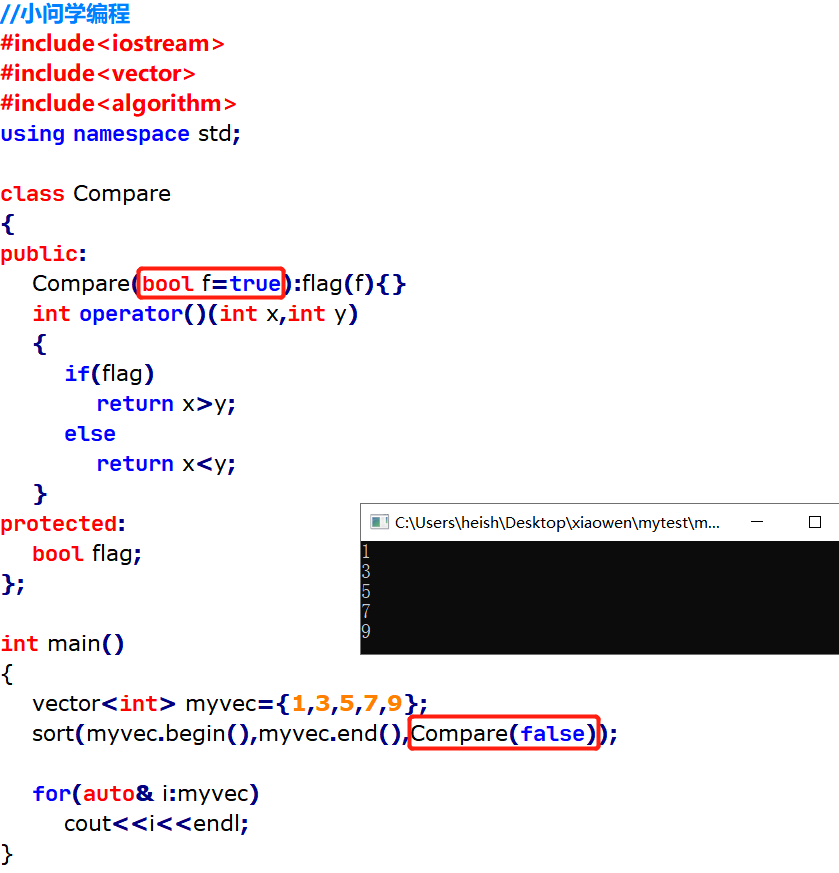相关博文:C++新特性探究(9.1):functor仿函数探究




仿函数技术难度不高,但对菜鸟来说侮辱性极强!
一. operator( )
重载了operator()的类的对象,在使用中,语法类似于函数。故称其为仿函数。
此种用法优于常见的函数回调。
例1:

附例1代码:
//小问学编程
#include<iostream>
#include<vector>
#include<algorithm>
using namespace std;
class Compare
{
public:
int operator()(int x,int y)
{
return x>y;
}
};
int main()
{
vector<int> myvec={
1,3,5,7,9};
sort(myvec.begin(),myvec.end(),Compare());
for(auto& i:myvec)
cout<<i<<endl;
}
二. 带状态的operator( )
相对于函数,仿函数,可以拥有初始状态,一般通过class定义私有成员,并在声明对象的时候,进行初始化。
例2:

例3:

附例3代码:
//小问学编程
#include<iostream>
#include<vector>
#include<algorithm>
using namespace std;
class Compare
{
public:
Compare(bool f=true):flag(f){
}
int operator()(int x,int y)
{
if(flag)
return x>y;
else
return x<y;
}
protected:
bool flag;
};
int main()
{
vector<int> myvec={
1,3,5,7,9};
sort(myvec.begin(),myvec.end(),Compare(false));
for(auto& i:myvec)
cout<<i<<endl;
}
私有成员的状态,就成了仿函数的初始状态。而由于声明一个仿函数对象可以拥有多个不同初始状态的实例。
例4:

附例4代码:
//小问学编程
#include<iostream>
using namespace std;
class Tax
{
public:
Tax(float r,float b):_rate(r),_base(b){
}
float operator()(float money)
{
return(money-_base)*_rate;
}
private:
float _rate;
float _base;
};
int main()
{
Tax high(0.3,30000);
Tax middle(0.2,15000);
Tax low(0.1,3500);
cout<<"请输入你的收入:";
double salary;
cin>>salary;
if(salary>30000)
cout<<high(salary)<<endl;
else if(salary>15000)
cout<<middle(salary)<<endl;
else
cout<<low(salary)<<endl;
return 0;
}